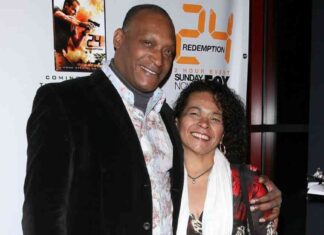In the midst of the Cold War between the United States and the Soviet Union, the 1980 Winter Olympics were organized in New York, United States. Tensions had eased slightly between the two sides in the 1960s and 1970s after the Cuban Crisis, and the tenures of Kennedy, Johnson and Nixon in the White House as well as those of Khrushchev and Brezhnev in the Kremlin helped to calm the conflict to open a so-called “détente” phase during this Cold War.
It is marked by several axes: summit meetings between leaders to maintain a dialogue, the signing of treaties and agreements to limit armaments, cultural, scientific and sporting sharing to create relations on different scales. However, this thaw period ended in December 1979 when USSR troops invaded Afghanistan in order to support a communist Afghan faction.
This last major crisis of the Cold War pitted the Soviets against the American-backed mujahideen and would last almost ten years until February 1989.
It was in this climate of accelerating conflict that the USSR participated in the Olympic Games on American territory, where they would challenge the United States in the semi-finals of the ice hockey event. A meeting that is anything but sporty.
Like the conquest of space, the two countries hope to use this event to show their power: soft power on ice, sport disguised as a military battle where weapons are transformed into skates and cross, where the military are sportsmen, where the belligerents represent only simple hockey teams. A sporting but also political and ideological duel which takes place on this ice on this Friday, February 22, 1980.
The Quebec referee François Larochelle, chosen for the meeting, declared several years later to have been under pressure from the two federations, which came in delegations to intimidate him with different strategies, symbol of a rhetoric as opposed as their ideology. So the stage is set: the buzzer sounds, the match can begin.
Unlike today, the Olympic rules set by the American Ice Hockey Federation stipulated in 1980 that players eligible for Team USA were exclusively university students aged 17-20, playing in the NCAA.
Considered invincible in the discipline, the USSR had the best team in the world with legends such as Boris Mikhailov, Aleksandr Maltsev, Vladimir Petrov and goalkeeper Vladislav Tretiak. Experienced professional players who played in the Soviet first division for large, structured and organized clubs. It was the heyday of Soviet hockey: no media in the world predicted anything but a gold medal for this team of behemoths on the ice. An air of David against Goliath thus invaded the Olympic Fieldhouse of Lake Placide.
The match begins in a heavy atmosphere. After nine minutes, the Soviets largely dominate the game and open the scoring thanks to Kroutov. A few moments later, against all odds, the Americans equalized in the wake of a good Schneider but the USSR quickly buried the hopes of the United States by regaining the lead with a goal from Makarov in the 17th minute.
American goalkeeper Jim Craig tries to keep his country in the game by repelling several Soviet attacks, allowing the score to remain at 2-1. But the American troops refused to give up their arms and equalized again thanks to Johnson, one second from halftime. At the break, the young American players stand up to the Soviets who are beginning to doubt.
On returning from the locker room, the Soviet coach surprised everyone by replacing his goalkeeper Tretiak, then reputed to be the best in the world in this position. The Soviets regain the advantage fairly quickly on a goal from Maltsev.
For more than 25 minutes, the scoreboard will remain unchanged. A period marked by a clear Soviet domination and a great Jim Craig who continues to block each offensive of the USSR in the American cages. At the start of the third period, the United States again surprised their opponents by equalizing through Johnson.
With ten minutes remaining, USA captain Mike Eruzione beat the Soviet keeper and put his country ahead for the first time in the game. The last minutes will be synonymous with American defense carried by a great Jim Craig. The buzzer rings, final score 4-3 for Team USA.
The feat is total: the United States bring down the great team of the USSR! This same team which, a few weeks earlier had humiliated them in a preparation match.
For the United States, this miracle on ice allows them to reach the grand final of the Olympic Games and to pocket the gold medal a few days later against a Finnish team without a solution. But above all this crazy success gives weight to American soft power which proves in the international spotlight that its university sports training is the best in the world, capable of bringing down the greatest professional collectives.
Most of this young squad has made a career in the NHL or other professional leagues. And even those who weren’t so lucky will be able to say that they were there, that they are American heroes, athletes with a great story, who demonstrated the power of Uncle Sam to the whole world.
On the side of the USSR, the repercussions are immediately less flamboyant. If the players were able to console themselves with a meager silver medal gleaned against Sweden, their Soviet pride was touched, the humiliation is real and above all more painful than ever in this period of Cold War.
Six players from the Soviet squad joined the NHL, in the United States, as a continuation of humiliation: Moscow lost its best players in addition to the medal. Although the USSR continued to dominate the sport until its demise in 1991, this miracle on ice changed the vision of Soviet power.
To end on a positive note, the Soviet Viacheslav Fetissov and the American Mike Ramsey were united under the same jersey in 1995 – that of the Detroit Red Wings in the NHL. The Russian will even win two Stanley Cups there in 1997 and 1998 within Detroit’s legendary “Russian Five”.








